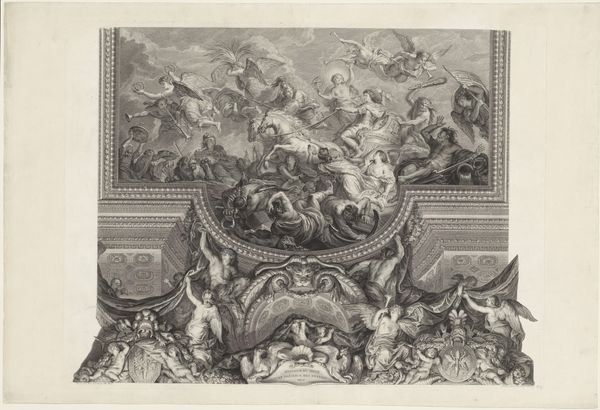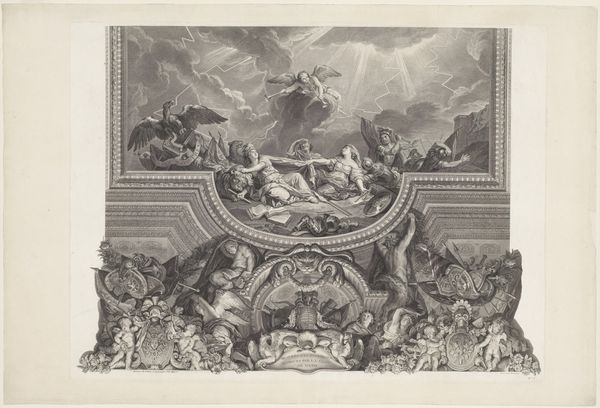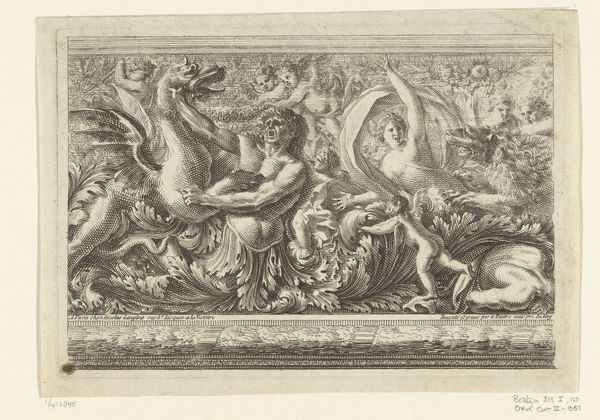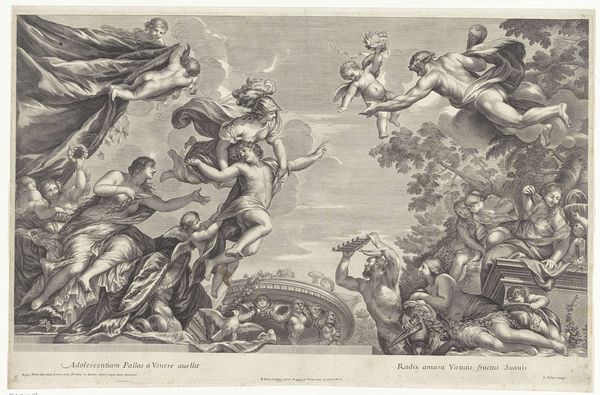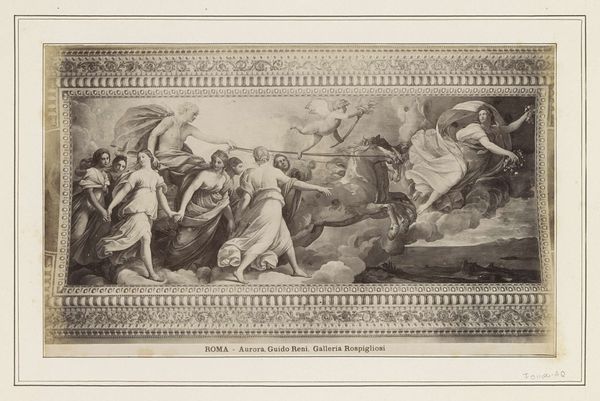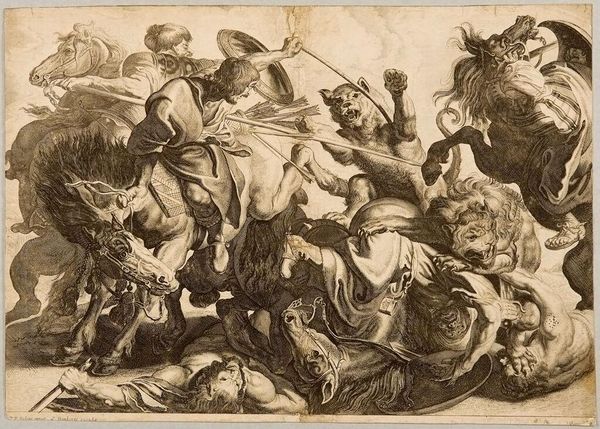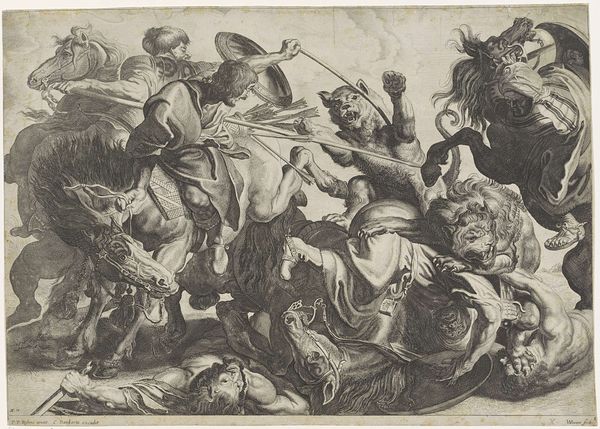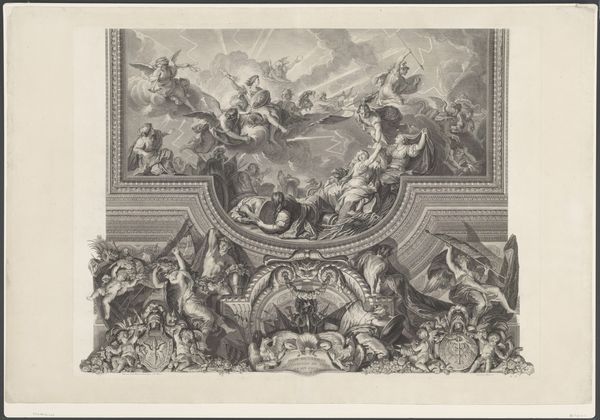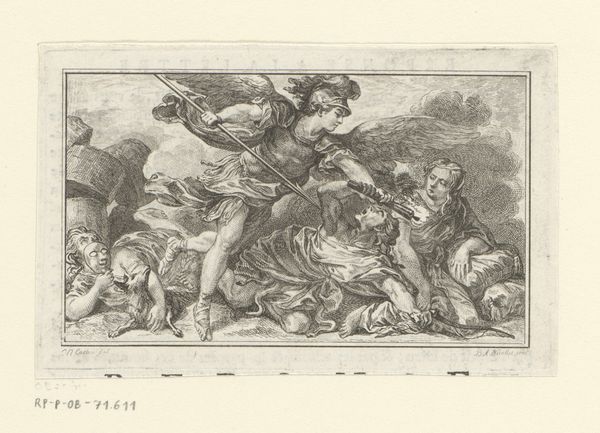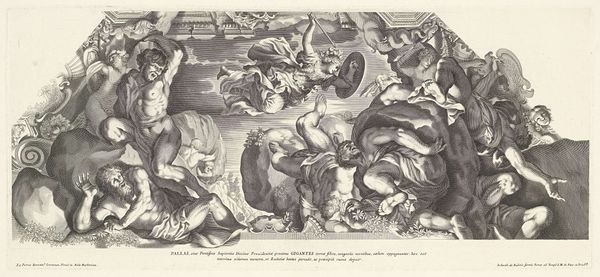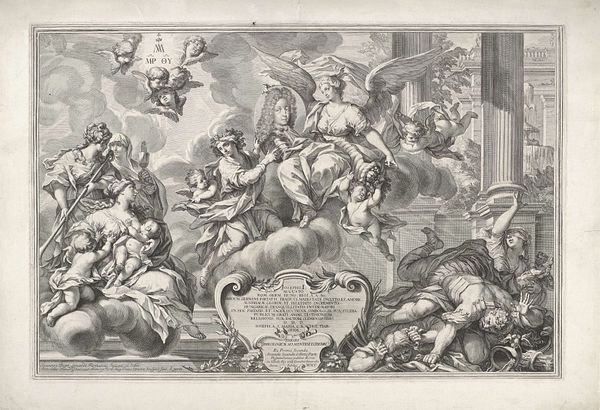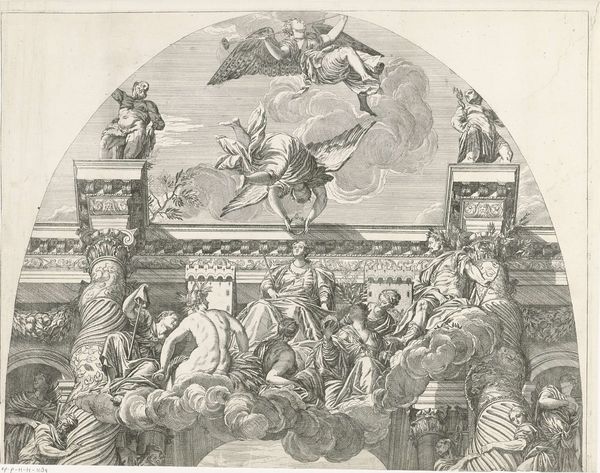
engraving
#
allegory
#
baroque
#
old engraving style
#
figuration
#
history-painting
#
engraving
Dimensions: height 314 mm, width 641 mm
Copyright: Rijks Museum: Open Domain
Curator: The "Gewelfdecoratie uit Pallazzo Barberini," dating from 1692-1762, located in the Rijksmuseum. A historical allegory printed through engraving on paper, by an anonymous artist. Editor: It feels grand and theatrical. All that detail etched onto paper, and so many figures represented! I'm wondering about how engravings like these were consumed. What do you see when you look at this work? Curator: The process itself is key. Consider the engraver: a skilled laborer meticulously reproducing an image, possibly from a painting or drawing in the Barberini Palace. Engravings were a means of mass production. Think of this not as high art, but reproductive labor. The dissemination of images became industrialized during the period. Who would have been purchasing such engravings, and why? Editor: I hadn't thought of it that way, seeing it as reproductive labor versus solely artistic creation. I was picturing an artist inspired by the grandeur of the palace… But what do you mean, "Who was buying them?" Wouldn't that always be other artists? Curator: Potentially, yes. But we also should look beyond "artists" to grasp the impact of these prints, that could also mean wealthy people furnishing their homes. Prints could stand in for access to cultural capital itself; ownership connoted status and taste, not always just artistic merit. Can you begin to view this as social circulation through material reproduction? Editor: I'm beginning to, but it seems like focusing only on the material aspects almost ignores the artist's intention in creating the design in the first place, no? Curator: Intention is often overwritten by process! The engraver's labor and the subsequent distribution challenge notions of authorship and originality that privilege artistic "genius." We have an "Anonymous" print. We focus instead on its function within a complex economic and social landscape. Editor: That does give me a different appreciation for the work involved in simply circulating art and imagery at that time, and how engravings facilitated access to imagery and ideas. Curator: Indeed. It underscores how the production and consumption of art are fundamentally intertwined with social and economic forces. It brings a lot into focus!
Comments
No comments
Be the first to comment and join the conversation on the ultimate creative platform.
